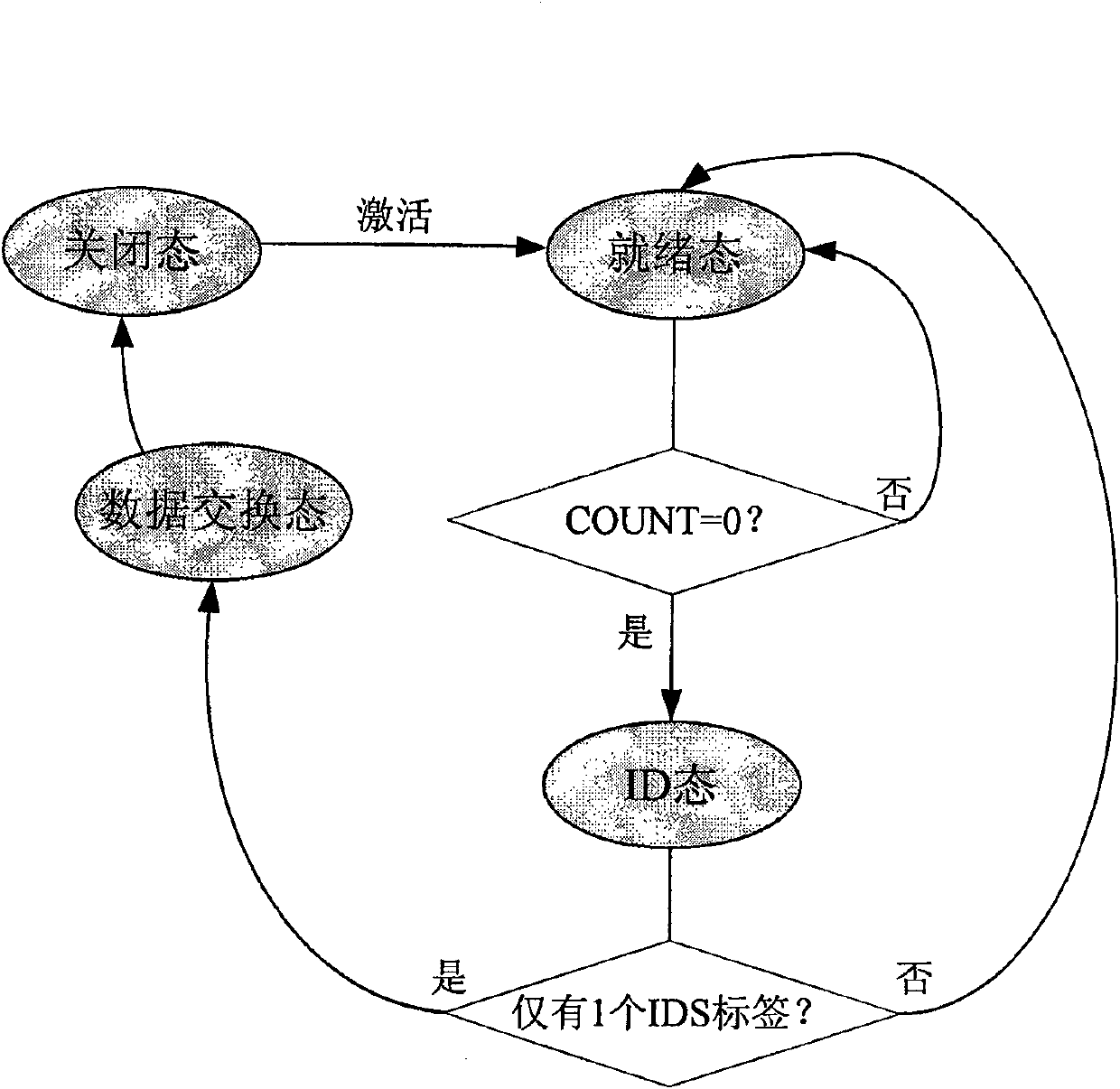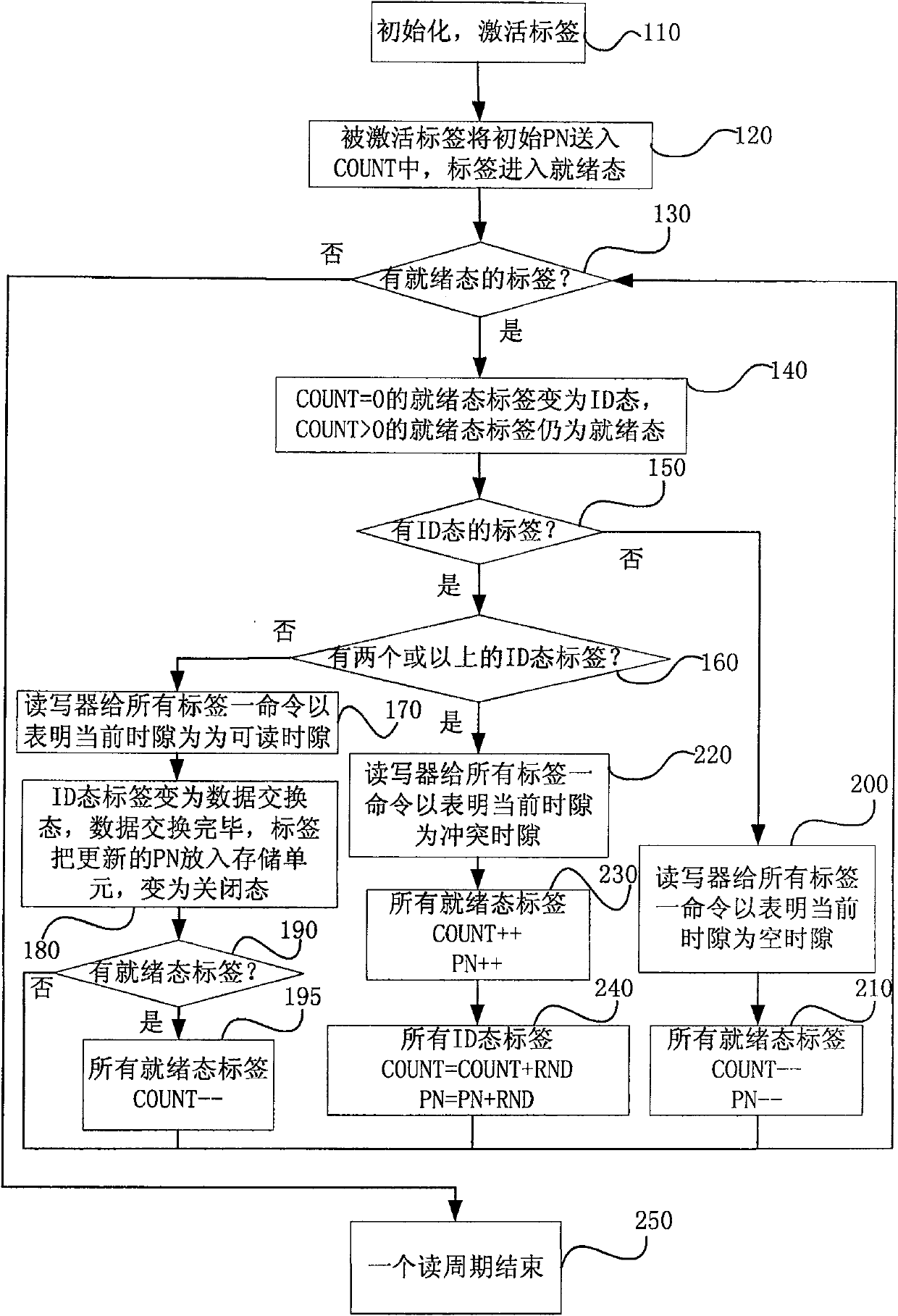Self-adapting binary tree multi- label collision intermediation method for RFID system
An adaptive binary and arbitration method technology, applied in the direction of induction record carriers, instruments, computer parts, etc., can solve the problems of limiting ABS application, missed reading of labels or prolonging the reading cycle, and achieve the effect of reducing conflict arbitration time
- Summary
- Abstract
- Description
- Claims
- Application Information
AI Technical Summary
Problems solved by technology
Method used
Image
Examples
Embodiment Construction
[0041] The RFID system of the inventive method is made up of a reader-writer and at least two tags within its coverage area, the reader-writer sends out a command first, and the tag performs corresponding operations after receiving the command, and the specific method is:
[0042] ① The time taken for a complete communication process between a reader and at least two tags within its coverage area is defined as a read cycle, and a read cycle consists of the following four stages:
[0043] a. Initial: the reader activates the tags within its coverage and issues a query command;
[0044] b. Send ID: The tag sends its ID to the reader. If there are more than two tags or no tag sends ID, the conflict arbitration method is executed, otherwise it enters the data exchange stage;
[0045] c. Data exchange: At this time, only one tag sends an ID to the reader, and the reader returns a successful command to the tag, and the tag exchanges data with the reader after receiving the command; ...
PUM
 Login to View More
Login to View More Abstract
Description
Claims
Application Information
 Login to View More
Login to View More - R&D
- Intellectual Property
- Life Sciences
- Materials
- Tech Scout
- Unparalleled Data Quality
- Higher Quality Content
- 60% Fewer Hallucinations
Browse by: Latest US Patents, China's latest patents, Technical Efficacy Thesaurus, Application Domain, Technology Topic, Popular Technical Reports.
© 2025 PatSnap. All rights reserved.Legal|Privacy policy|Modern Slavery Act Transparency Statement|Sitemap|About US| Contact US: help@patsnap.com



